- JST Home
- /
- Strategic Basic Research Programs
- /
 PRESTO
PRESTO- /
- project/
- Exploration of the Blue Biosphere-Climate System Towards Carbon Cycle Management/
- [Blue Biosphere] Year Started : 2024
[Blue Biosphere] Year Started : 2024
Yuta Isaji
Stable Fe isotopes of heme B: An innovative approach to trace anthropogenic Fe
Grant No.:JPMJPR24G1
Researcher
Yuta Isaji

Researcher
Research Institute for Marine Resources Utilization
Japan Agency for Marine-Earth Science and Technology
Outline
Anthropogenic Fe released by human activities is an important source of Fe that affects primary production in the ocean. This project aims to develop compound-specific stable Fe isotope analysis of heme B as a novel tool to trace the Fe sources supporting primary production. By applying this methodology to seawater and deep-sea sediments, I will investigate the utilization of anthropogenic Fe by primary producers in modern and past oceans, and elucidate its impact on the global carbon cycle.
Yoshikazu Ohno
Advancement of Observation Techniques at the Crystal Growth Interface of Coral Skeletons
Grant No.:JPMJPR24G2
Researcher
Yoshikazu Ohno
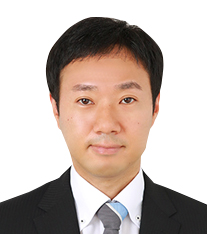
PRESTO Individual Researcher, Japan Science and Technology Agency
Outline
Reef-building corals form geological structures over long periods of time, supporting the rich biodiversity of coral reef ecosystems. However, the skeletal formation processes of marine organisms, including corals, remain largely unexplored. The factors that inhibit their growth are mostly unknown as well, due to limited research in cellular physiology. This study aims to develop non-invasive imaging techniques to visualize the solid-liquid interface on the surface of coral skeletons by applying non-destructive live imaging technology.
Michiko Takahashi
Salvaging and library construction of uncultured marine viruses
Grant No.:JPMJPR24G3
Researcher
Michiko Takahashi

Senior Researcher
Biomanufacturing Process Research Center
National Institute of Advanced Industrial Science and Technology
Outline
Metagenomic sequencing has revealed potential role of viruses in the biological carbon pump. However, their biological properties remains unclear. This project aims to develop a virus-salvaing method to obtain uncultured marine viruses as infectious particles and construct a marine-virus library. It will contribute to a deeper understanding of biological carbon pump.
Yasuhide Nakamura
Clarification on the role of unicellular zooplankton in the ocean carbon cycle
Grant No.:JPMJPR24G4
Researcher
Yasuhide Nakamura
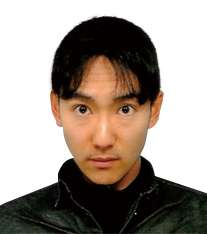
assistant professor
Estuary Research Center
Shimane University
Outline
Plankton play an important role in the oceanic carbon cycle by transporting atmospheric CO2 to the deep sea, but the details of the microbial loop are still unknown. This study, therefore, focuses on unicellular zooplankton and aims to elucidate a new pathway of the microbial loop through them.
Teppei Niide
Design of a non-photosynthetic carbon fixation pathway into marine microorganisms
Grant No.:JPMJPR24G5
Researcher
Teppei Niide

Assistant Professor
Graduate School of Information Science and Technology
The University of Osaka
Outline
This study aims to develop carbon-negative technology in coastal industrial regions by implementing artificial CO2 fixation pathways in marine microorganisms to produce valuable materials from CO2. To achieve this, I will design highly energy-efficient artificial CO2 fixation pathways by conducting metabolic simulations using a model that integrates all enzymatic reactions from existing databases.
Junya Hirai
Genome-level analysis of copepods for risk assessment under climate change
Grant No.:JPMJPR24G6
Researcher
Junya Hirai

Lecturer
Atmosphere and Ocean Research Institute
The University of Tokyo
Outline
Climate change causes rapid changes in marine environments including water temperature increase and ocean acidification, and there is a potential risk of ‘invisible loss of genetic diversity within species’. This project focuses on marine planktonic copepods, important components in marine food webs as a food of fish larvae, and indicators of marine ecosystems. The whole genome of key copepods in the oceanic regions will be obtained to determine genetic populations and areas, which are vulnerable to environmental changes in the future. In addition, comparative genome studies will be carried out using the obtained copepod genome for ‘ecogenomics of copepods’, such as evolutional and diversification processes of pelagic copepods, in the era of genome-level analysis.
Manabu Fujii
Molecular structure and environmental functions of dissolved organic matter in coastal seawater
Grant No.:JPMJPR24G7
Researcher
Manabu Fujii
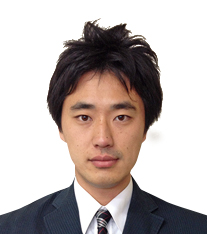
Associate Professor
School of Environment and Society
Institute of Science Tokyo
Outline
A network traversal approach to explore and comprehensively screen molecular structures of dissolved organic matter (DOM) will be developed by using ultra-high resolution mass spectrometry, chemoinformatics technology, and network analysis. Environmental functions and biogeochemical processes of coastal marine DOM will be evaluated from various aspects including carbon cycling through verification of candidate structures by tandem mass spectrometry and LC analysis, elucidation of transformation process of DOM molecules, estimation of environmental functions from molecular structure information.
Masako Hori
Boron isotopic composition in diatom siliceous frustules as a potential pH proxy
Grant No.:JPMJPR24G8
Researcher
Masako Hori
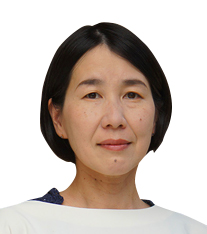
associate professor
Division of Math, Sciences, and Information Technology in Education
Osaka Kyoiku University
Outline
The ocean absorbs a significant amount of CO2 released in the atmosphere. Biogenic silica is a potential geological archive for recording paleo-ocean environments. In this study, I will analyze boron isotopic compositions in modern diatom frustules from various aquatic environments to construct an equation for determining ambient pH. Additionally, I will investigate post-depositional diagenesis to verify the long-term stability of this proxy. By extending pH records over long time scales, this research will contribute to elucidating the role of oceans in CO2 absorption.
Katsunori Mizuno
Development of an Innovative 3D Observation tool for Underwater Ecosystems
Grant No.:JPMJPR24G9
Researcher
Katsunori Mizuno
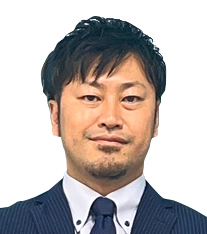
Associate Professor
Graduate School of Frontier Sciences
The University of Tokyo
Outline
In order to observe three-dimensional ecological information on organisms, which is one of the most important information bases for advancing the evaluation of measures to expand the blue carbon ecosystem and the circulation of materials near the seafloor, this research will apply super-resolution technology to seafloor image data of various time-space scales to achieve higher precision and efficiency in the generation of seafloor habitat maps. A technology for observing the three-dimensional structure of ecosystems, which will contribute to the quantification of material circulation in sediments, will also be developed in this study.
Kenta Watanabe
Integrated understanding of blue carbon storage and atmospheric CO2 removal
Grant No.:JPMJPR24GA
Researcher
Kenta Watanabe

Senior Researcher
Port and Airport Research Institute
National Institute of Maritime, Port and Aviation Technology
Outline
Submerged blue carbon ecosystems, such as seagrass and macroalgae habitats, have the capacity to store organic carbon within the ocean. However, to what extent do they contribute to atmospheric CO2 removal across different temporal and spatial scales? This project aims to achieve an integrated understanding of the carbon storage capacity of seagrass and macroalgae habitats and their effects on atmospheric CO2 removal. To this end, I will conduct in situ measurements of carbon storage in these habitats and estimate the temporal and spatial extent of CO2 removal, from coastal to offshore regions.













